|
January
2021
Contents
Monthly Meeting
Upcoming Field Trips
President's Message
Bird of the Month
Special 2020
Challenge Report
Field Trip Reports
JANUARY MEETING:
January UCB Meeting:
Thursday, Jan 14 at 7pm via Zoom
With a covid vaccine becoming available, the end of all this craziness is
hopefully in sight, and maybe this year we’ll be able to meet in person once
again. Until we can safely do so again we are going to resume our UCB meetings
in virtual format.
Our January awards ceremony will be held virtually via Zoom, an app you can
download here: https://zoom.us/ on
most computers and smart phones, or join via the web link invitation below or
alternatively (if you can’t join on the computer) through a call-in phone
number (any of the ones listed below). For our meeting this month we will
announce the names of those who completed the 2020 challenge and invite anyone
who wants to share their favorite memories from completing the 2020 challenge.
Hope to “see” you all there!
FIELD TRIPS:
Christmas Bird Count
January 2, 2021
The Payson count will be on January 2. This year we will
not be meeting before the count like we usually do, so
if you want to participate please contact me before the count to get an
assignment.
Bryan Shirley
801-722-9346
President's Message -
January 2021
by Machelle Johnson
So January 1st didn't magically change the world and rid
us of the novel coronavirus, but I have been reflecting on things I've learned
about birding by myself, and on some birding goals for the new year.
I don't mind birding alone, sometimes I prefer it, but I find that it is fun to
go with one or 2 other people as well. More eyes and shared knowledge helps me
learn about ID's and other field marks.
When I don't have to work my schedule around anyone else I can jump in the car
and head out whenever works best for me. That was one thing that helped me reach
the gold level on this challenge.
By needing to rely mostly on my own knowledge and using field guides, I was able
to improve my birding ID and I learned a lot about what to look for in that
first quick glance. I remember something Alton Thygerson told me one time when I
mis-identified a juvenile Long-bulled Curlew as a Whimbrel. He reminded me to
look for 3 identifiers to confirm an ID. I practiced that a lot this past year.
I've really missed field trips and going to new places for birding. I don't know
how long it will be before we start having group trips again, but I'm looking
forward to it.
Some goals I've set for myself this year are to get out as often as I can and to
explore birding places that I haven't been to before.
I think I'll use that 'point system' challenge we used for the last challenge
year as a guide for birding this year. It gives me a goal to work towards and
gets me out of the house.
My other birding goal is to visit another state to see birds that we don't have
here. I really enjoyed Florida and California several years ago. I'd love to go
to Texas or Panama! A group field trip to a place like that would be awesome,
maybe we can work that out!
All in all, I'm glad to see 2020 go and look forward to 2021. I don't think my
life has or will change a whole lot, but I'm glad that I have this hobby and
such a great group of friends to share it with.
I wish you all a happy, healthy and prosperous new year and I really hope to see
you all soon!
|
|
|
Provo Christmas Bird Count – 2020
by Bryan Shirley
|
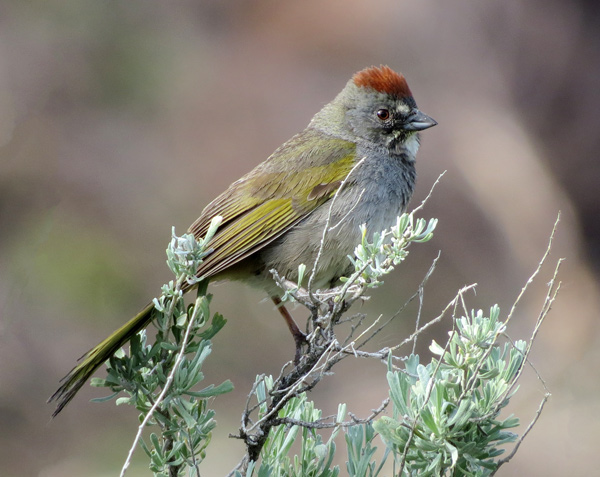
Green-tailed Towhee
by Cliff Miles
©Cliff Miles |
In spite of a the challenges
presented by covid we had a great count this year. We ended up with 104 species
total and counted 37,370 birds. Our average is 92 and the best we have ever done
is 108, so we had a good year. We benefitted from having lots of participants
this year. That allowed us to really cover the areas better than normal. Thanks
to everybody who participated. We added one new species never seen on our count
before – a Green-tailed Towhee was located in Lindon. Other good birds
were Lewis’ Woodpecker & White-throated Sparrow. In my area my
best bird was Evening Grosbeaks – always a treat. Notable misses were
Lesser Scaup & Golden Eagle – both are normally seen almost every year. More
than the scaup and eagles I missed seeing all of you though. It was too bad that
we couldn’t get together to tally the results over dinner and with good company,
but 2020 is almost over and 2021 is sure to be better!
1. Canada Goose – 1,236 (781 average)
2. Cackling Goose – 1 (5th year recorded but only recently split)
3. Wood Duck 19
4. Gadwall – 119
5. American Wigeon – 1,451
6. Mallard – 1317
7. Northern Shoveler – 39
8. Northern Pintail – 43
9. Green-winged Teal – 161
10. Canvasback – 2
11. Redhead – 2
12. Ring-necked Duck – 10
13. Bufflehead – 2
14. Common Goldeneye – 65
15. Hooded Merganser – 3
16. Common Merganser – 5
17. Ruddy Duck – 55
18. Chukar – 3
19. Ring-necked Pheasant – 7 (average 102 but gets lower every year)
20. Wild Turkey – 53
21. California Quail – 203
22. Pied-billed Grebe – 57 (previous high of 38)
23. Great Blue Heron – 30
24. Great Egret – 3 (Only recorded 4 years. Last year we had 4)
25. Black-crowned Night-Heron – 15 (I thought this would be a new record but we
had 21 one year)
26. Bald Eagle – 42 (previous high of 39)
27. Northern Harrier – 23
28. Sharp-shinned Hawk – 12
29. Cooper’s Hawk – 8
30. Red-tailed Hawk – 54
31. Rough-legged Hawk – 2
32. American Kestrel – 42
33. Merlin – 12 (previous high of 11)
34. Peregrine Falcon – 1
35. Prairie Falcon – 3
36. Virginia Rail – 13
37. American Coot – 1037
38. Sandhill Crane – 9
39. Killdeer – 6
40. American Avocet – 1 (only the 7th year recorded)
41. Greater Yellowlegs – 3
42. Least Sandpiper – 2 (only the 5th year recorded)
43. Wilson’s Snipe – 12
44. Ring-billed Gull – 496
45. California Gull – 9 (average of 68)
46. Rock Pigeon – 350
47. Eurasian Collared-Dove – 726
48. Mourning Dove - 93
49. Barn Owl – 1
50. Western Screech-Owl – 2
51. Great Horned Owl – 5
52. Belted Kingfisher – 11
53. Lewis’s Woodpecker – 1 (only the 5th year recorded)
54. Downy Woodpecker – 28
55. Hairy Woodpecker – 1
56. Northern Flicker – 158
57. Say’s Phoebe – 3 (only recorded 2 previous years and 3 tied the high)
58. Black Phoebe – 1 (recorded for the first time last year. Not the same
location this year)
59. Stellar’s Jay – 9
60. Woodhouse’s Scrub-Jay – 207
61. Black-billed Magpie – 266
62. American Crow – 88
63. Common Raven – 11
64. Horned Lark – 26
65. Black-capped Chickadee – 184
66. Mountain Chickadee – 36
67. Juniper Titmouse – 9 (Only 11th year recorded. Recorded by several groups
this year)
68. Bushtit – 13
69. Red-breasted Nuthatch – 19
70. White-breasted Nuthatch – 7 (Seen on less than half of previous years.
recorded by several groups this year.
71. Brown Creeper – 20
72. Canyon Wren – 1
73. Marsh Wren – 10
74. American Dipper – 14
75. Golden-crowned Kinglet – 2
76. Ruby-crowned Kinglet - 21
77. Townsend’s Solitaire – 25
78. Hermit Thrush – 3
79. American Robin – 834
80. European Starling – 19,512
81. American Pipit – 166
82. Cedar Waxwing – 80
83. Orange-crowned Warbler – 1 (only seen on about half of the counts)
84. Yellow-rumped Warbler – 20
85. Spotted Towhee – 111
86. Green-tailed Towhee – 1
87. American-Tree Sparrow – 28
88. Song Sparrow – 169
89. Lincoln’s Sparrow – 1 (16th record)
90. White-throated Sparrow – 1 (11th record)
91. White-crowned Sparrow – 485
92. Dark-eyed Junco (no subspecies) – 306
a. Oregon – 204
b. Gray-headed – 4
c. Pink-sided – 8
d. Slate-colored – 8
93. Red-winged Blackbird – 4844
94. Western Meadowlark – 62
95. Yellow-headed Blackbird – 5
96. Brewer’s Blackbird – 130
97. Great-tailed Grackle – 270 (almost a new high but not quite)
98. Cassin’s Finch – 2
99. House Finch – 427
100. Pine Siskin - 5
101. Lesser Goldfinch – 74
102. American Goldfinch – 28
103. Evening Grosbeak (only recorded about half of the years)
104. House Sparrow – 770
|
|
|
|
|
BIRD OF THE MONTH:
|
|
|
|
|
The Common Raven
(Corvus corax)
by Lynn Garner
|
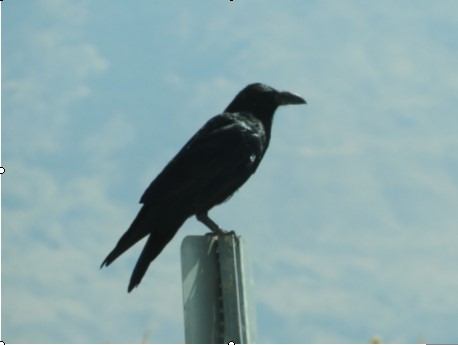
Common Raven
by Lynn Garner ©Lynn
Garner |
One of the most
widely-distributed birds in the northern hemisphere is the Common Raven (Corvus
corax), a bird that seems to invite human comment wherever it is found.
Edgar Allen Poe made one famous, and it is reported that one raven raised as a
pet was taught to say the word, “Nevermore!” Legend has it that if ravens ever
leave the Tower of London, the British nation will cease to exist; warders
constantly maintain a small flock of their beloved birds, not wanting to test
the legend.
Natives of the northwestern coast of North America describe the raven as an
inveterate trickster.The predatory nature of the raven has also earned it the
literary reputation of ill omen.
The Common Raven is often seen in Utah
along the highway and in the farmlands, mountains, canyons, and deserts, perched
on posts and outcrops or soaring smoothly through the sky. Ravens sometimes
perform aerial acrobatics; All About Birds reports that a raven was seen
flying upside-down for a half mile or so! In the western states, ravens occupy
almost all habitats outside urban centers. Ravens are very territorial, aiming
to keep all other ravens away from their nesting site throughout the year. The
nest itself can be quite varied, usually made of sticks, up to five feet across,
and is often lined with soft rubbish or even colored paper; the clutch is 3–7
mottled greenish, olive, or bluish eggs. Ravens can be found where other birds
might not find much support; a report of one Christmas count in Newfoundland
consisted solely of six Common Ravens.
Ravens are sooty-black, larger than a crow,
about 24" long with a wingspread of about 53" and weighing about two and a half
pounds. Their call is an echoing croak that is unique and extremely varied. They
are truly omnivorous, eating whatever is at hand, such as scavenging roadkill,
raiding nests, hunting insects and small animals, and visiting landfills. Their
intelligence, similar to that of other smart Corvidae, enables them to learn and
to act in concert with the flock. Ravens have been seen to team up, one
distracting brooding seabirds so another can snatch eggs or young from the nest.
They have been reported to gather to the sound of a hunter’s gun, hoping to find
a carcass, but not responding to other loud noises. In winter, a young raven
finding a carcass will invite others to share it with him, apparently hoping to
outnumber the proprietary ravens of the territory.
There is a story from medieval Hungary that
during a conflict between nobles, the hero was captured and left to die in a
pit. A raven (holló) came and dropped a stone (kö) into the pit and continued
doing so until the prisoner could climb the pile of gravel and escape. The town
where this took place (about 80 km northeast of Budapest) is now called Hollókö
and sports a heroic-sized statue of a raven at the entrance to the town.
|
|
|
|
The
2020 Birding Challenge
Utah
County Birding Group
Report by:
Robert Parson
Overall---in
a challenging year, this turned out to be a life-saver, lots of fun and
very different than originally anticipated. Kept me going and provide an
incentive to bird more and in different ways than I would have otherwise.
Completed 30 of the 36 challenges. Missed #6 (20 species on the 20th)
by two months, #25 (Turkey Count) and #5 (20 Life Birds) by one, all of
which I should have been able to do.
Over-all Report—saw
504 species during 2020 in three countries, 23 states, one district and
two territories. In 2020, saw 238 species in Utah, 188 in Utah
County—both new records for me by a considerable margin. Saw 19 new life
birds (only one in the United States) and 29 new species for Utah. Well
below my 2019 count for total species seen and lowest over-all total seen
in six years, but pleased with results for 2020. By far, my best, most
fun and educational birding year ever in Utah.
Most Challenging—Birding
in 20 States. I was able to go birding in 23 states, one district and two
territories during 2020. Ending up driving to 17 different states, flew
to six. Definitely not the way I planned to bird in 2020, but quite the
experience and we saw 15 National Parks on the way.
Most Rewarding---Birding
in 26 of the 29 counties in Utah. Missed Morgan, Sanpete and Weber. After
living out of the state for almost 40 years, it has really been fun to
come back and start to learn Utah. Visited all National Parks, dozens of
State Parks, lakes, cities and towns. This is one amazing state.
Most Educational---Tie
between #33 (20 species in 20 trees) and #13 (20 species in 20 towns). I
used an app to help me with the trees, shrubs and plants. I can’t believe
how much I enjoyed learning more about an area that I new so little about,
despite loving the outdoors so much.
Most Satisfying---After
a long hike up City Creek Canyon, in freezing weather, and then looking
for two hours with absolutely no luck, deciding to leave and hiking back
down the canyon, and then telling myself to hike back up to the noted
campground just one more time, then giving myself another deadline to
leave, but then deciding to stay just 15 more minutes---for the third
time, and then—finally--- having two Acorn Woodpeckers fly in just above
my head and put on a show!
Most Tenacious---Completed
at least one eBird submission on every day of 2020! Going for 500
consecutive days---then will probably take a break. Have about 70 days to
go.
Most Exciting—As
part of #5 (20 New Life Birds), finally finding a Pacific Wren in Utah.
Although I missed getting 20 new life birds for the first time in my
birding career, I was absolutely thrilled to finally find a Pacific
Wren---after dozens of efforts throughout the state.
Biggest Nemesis---Chukar.
Tried a dozen times in multiple locations (Antelope Island, west of Utah
Lake, Lehi area and more), including two hours on December 30 and two
hours on December 31. Maybe next year. That’s what keeps us coming back
for more! That is the challenge. That is birding!!!!
|
|
|
|
Field Trip Reports
(There are Individual Field Trip Reports on our
Facebook Page)
|
|
 |
|
Provo Christmas Bird Count
(19 Dec 2020)
by Suzi Holt
|
Provo Christmas Bird Count was a
success! Thanks Amanda Holt Tinoco and Tatum, Jessica Holt and Carol Hatch
Harris for coming with me! A fun Christmas tradition!
|
|
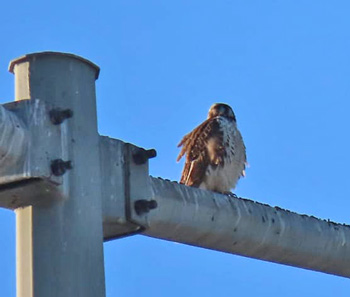
Prairie Falcon
|
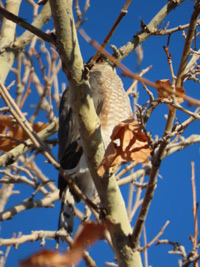
Sharp-shinned Hawk
|
|
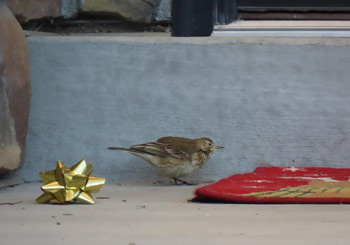
American Pipit on our front porch a firt for us |

Canvasback and Pied-billed Grebes
|
|
 |
 |
|
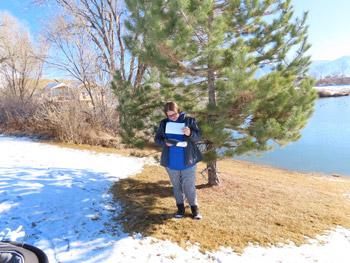 |
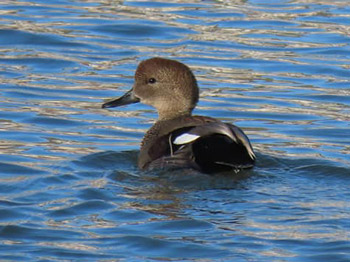
Gadwall
|
|
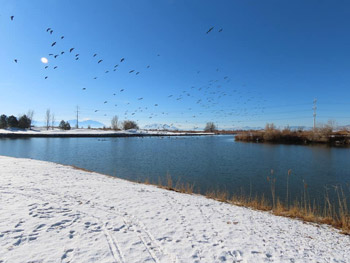
Canada Geese
|
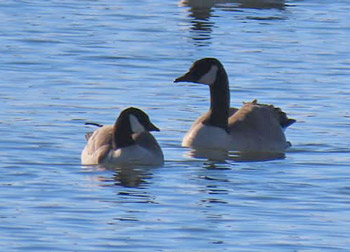
Cackling and Canada Goose
|
|
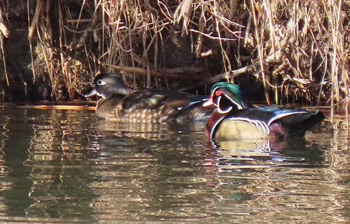
Woodducks
|
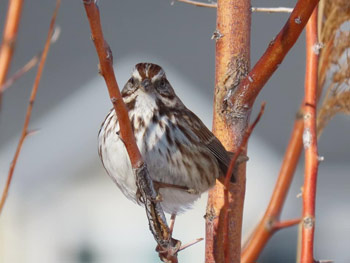
Song Sparrow
|
|
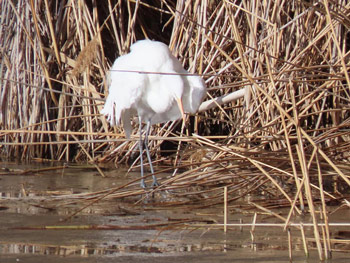
Great Egret
|
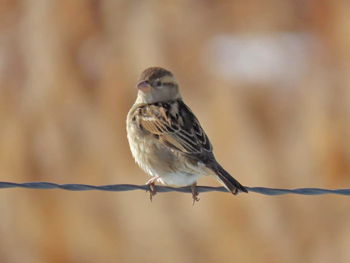
House Sparrow
|
|
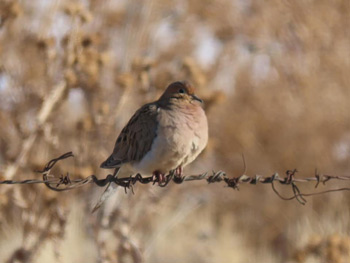
Mourning Dove
|
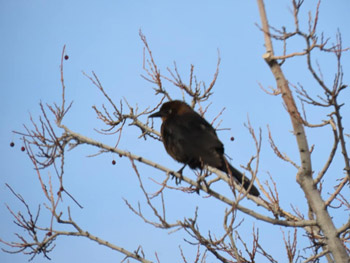
Great-tailed Grackle |
|
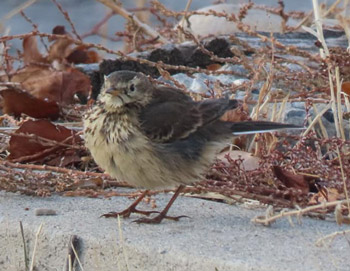
American Pipit
|
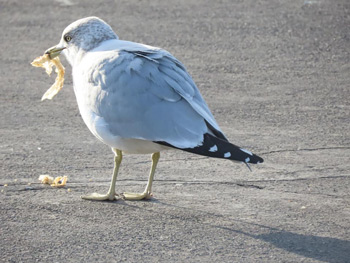
Ring-billed Gull
|
|
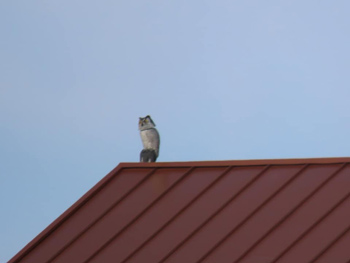
You always have to find one of these!!! |
(See Report of the whole Provo CBC above) |
|
|
|
|
|
|
Looney at Deer Creek
(11 Dec 2020)
by Suzi Holt
|
|
I must be looney!!! We found a Yellow-billed Loon
yesterday at Deer Creek!!! We also finished 2 more State Parks! Deer Creek
was tough and so was Wasatch Mountain SP! But we had a blast and got yummy
cinnamon rolls at the Midway Bakery! A awesome day for sure!!! Sorda ironic
the first looney story was a Pacific Loon, next while chasing the YBLO at
Willard Bay SP we found a RTLO and not the YBLO then now finding a YBLO!!!
2020 isn't too bad after all especially for birding! Thanks Maximus Michael
Malmquist and Bryant Olsen for your help on the ID!! |
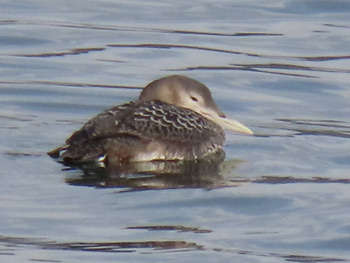
Yellow-billed Loon -Lifer!
|
 |
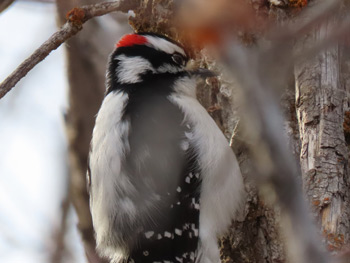
Downy Woodpecker
|
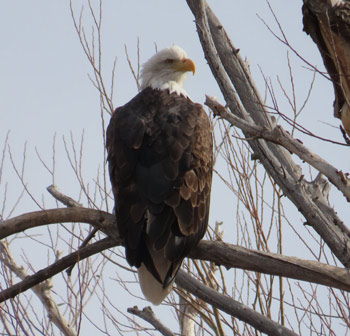 |
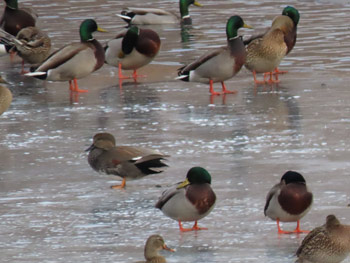
Mallards and a Gadwall
|
|
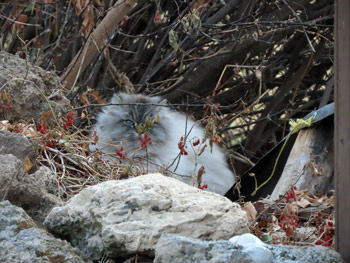
The fattest cat I have ever seen
|
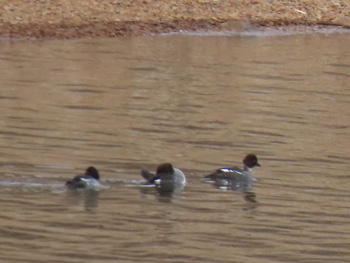
Common Goldeneyes
|
|
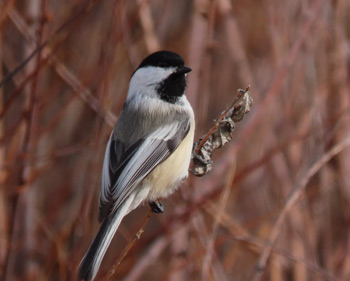
Black-capped Chickadee
|
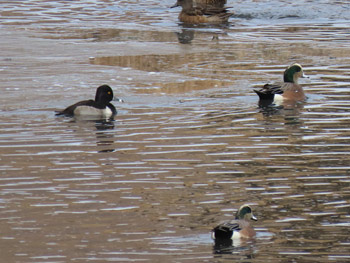
Ring-necked Duck and American Wigeons
|
|
|
|
|
|
|
|
|
|
If you have had any interesting
field trips on your own this month,
feel free to write a report for the newsletter!
(Send it to:
ucbirders@utahbirds.org)
|
|
|































